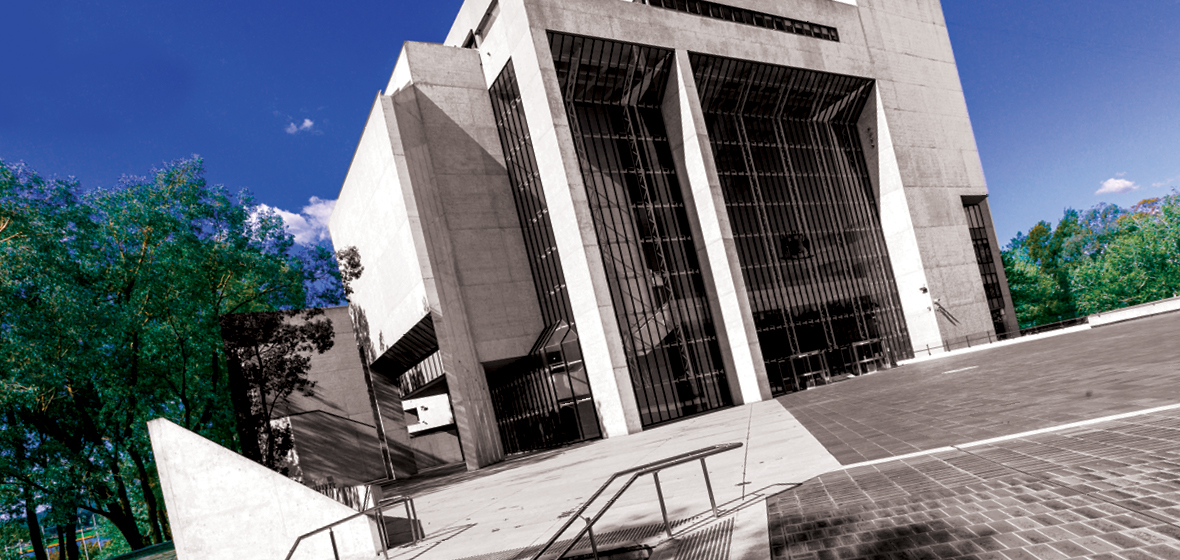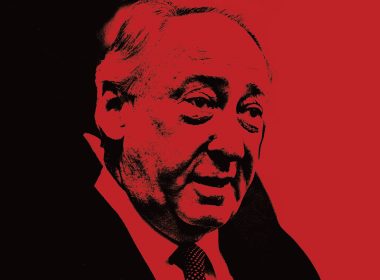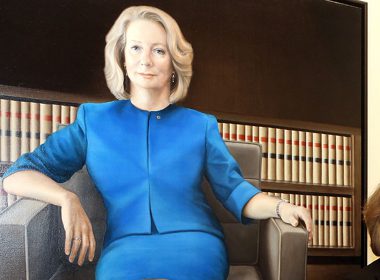If you consult more broadly, and seek nomination more broadly, you’ll get better diversity.
Amy Coney Barrett’s appointment to the US Supreme Court made global headlines. Across the Pacific, the elevation of a new justice to Australia’s highest court was an entirely different story.
“Our High Court really likes the shield of legalism. It likes the idea that legal methods are removed from a judge’s particular experience or values. Some of that is a cultural bias, and some of it is clinging to an idea that perhaps doesn’t exist anymore,” Dr Kcasey McLoughlin tells LSJ.
The social commentator and senior lecturer at Newcastle Law School has been studying Australia’s High Court for years. She crafted her doctoral thesis around an interrogation of the impact of gender on its decision-making.
“We know that judges make law. It doesn’t just fall from the sky,” she continues.
McLoughlin is one of a growing number of academics and thought leaders raising questions about the process by which judges are appointed to the nation’s highest court. It’s an area of the profession that is almost taboo to discuss. Appointees are always meritorious and renowned for their excellent legal brains, but the lack of transparency is giving rise to uncomfortable questions about things like diversity, politics, and bias.
It’s difficult to discuss, which makes it difficult to engage people’s interest. While no-one is saying the system is broken, some are suggesting we should consider doing things differently.
“Australia’s system completely lacks transparency; we don’t know on what basis the decisions are being made. On the flip side, you’ve got the US experience – it’s akin to watching a sausage be made, and you perhaps see too much. It’s very politicised,” McLoughlin says. “We like to think of our approach as superior, since it’s not as political, but the fact that the executive has such an unfettered power to make appointments makes it political. There are all kinds of problems with the process.
“My view is not that we should adopt the US approach, simply that we should rethink the breadth of the executive’s discretion.”
In its 120-year history, not a single person has been appointed to the High Court bench from South Australia or Tasmania.
The age of rockstar judges
Three letters spring to mind as soon as you think of the Supreme Court of the United States: RBG. Ruth Bader Ginsburg, who passed away in September last year after a battle with pancreatic cancer, was a legal rockstar. A champion for gender equality, she became a pop culture icon during her tenure on the bench. This celebrity meant her likeness appeared everywhere from the cover of Time magazine to Saturday Night Live skits, gimmicky paraphernalia like keyrings and pens, memes, political placards, Halloween costumes, and even a Hollywood film.
American judges are appointed for life, with no mandatory retirement age, and many Democrats hoped Ginsburg would survive President Donald Trump’s term in the Oval Office. In a polarised nation, where members of the court openly align to one major political party or the other, the ability to appoint a judge is seen as a major political prize.
In the US, judging is about more than just interpreting the law; in some cases, it’s about providing the nation with a moral compass. The legendary case of Roe v. Wade, for example, ruled that the Constitution protected a woman’s right to choose an abortion in 1972. More recently, the 2015 case of Obergefell v. Hodges ruled that same-sex couples were guaranteed a fundamental right to marry. It presents an opportunity for the commander-in-chief to tip the scales one way or the other.
Ginsburg was as famous in death as in life. According to the Associated Press, “thousands” of people paid their respects at a public wake outside the Capitol building in Washington, D.C. At the same time, a media storm began as journalists raced to find out who would be selected as her replacement. Within a week, the name “Amy Coney Barrett” entered the public discourse, making global headlines. A well-known conservative whose stance on guns and immigration reliably leans to the right, she was rushed through a Senate confirmation hearing just over a week before Americans went to the polls.

Arguments for openness
James Metzger, an expert in US law and politics at the University of NSW (UNSW), says the celebrity status of judges speaks to American culture. Even to a casual observer, names like Sandra Day O’Connor, Antonin Scalia and Brett Kavanaugh ring a bell for various reasons (some more complimentary than others). Domestically, heavy media coverage and public confirmation hearings mean Americans get to learn who the judges are as people and find out exactly where they sit on the ideological spectrum.
“There’s a lot of conversation about whether the court is becoming more conservative or more liberal with each appointment, and which justices are likely to decide which way,” Metzger says.
While it’s difficult to imagine a situation in which Australians would make a voting choice based on a leader’s ability to appoint someone to the High Court, it’s a very real consideration in the US. Political groups on both sides have lists of names ready for the president to consider when a position opens. However, the US Constitution requires the confirmation of the Senate to ensure that appointees are not just political pawns but qualified to serve the people. It’s political, yes, but there’s a check in the system.
Of course, political persuasion alone is never enough to guess the court’s direction on any given matter. The current chief justice, John Roberts, is famously conservative, but he’s also known for his black-letter approach and commitment to following precedent. He’s been the fifth vote on several controversial decisions, from marriage equality to Obamacare, and is leading the court with a steady hand.
“Now that Amy Coney Barrett is replacing Ruth Bader Ginsburg, it will be interesting to see if there is … not less respect for precedent, but more of a willingness to divert from precedent,” Metzger explains. “It’s really hard to speculate what kind of influence the conservative majority will have on the Supreme Court.”
Difference a day makes
The process could not be more different in Australia. When Barrett’s appointment was announced, she and the President fronted the media together, speaking from the Rose Garden of the White House amid much pomp and circumstance. Coincidentally, the following day, Australia’s Prime Minister and Attorney-General attended a news conference at Parliament House in Canberra, announcing not one but two new justices to Australia’s highest court. Barely anyone batted an eyelid.
Much has been written about the meritorious records and excellent reputations of Justices Simon Steward and Jacqueline Gleeson. A Google search reveals short biographies listing their achievements, but little else is available. The new judges have not appeared publicly. In fact, to find quotes that speak to their personalities, many journalists have instead trawled through court records looking for transcripts from the ceremonial sittings in which they were respectively sworn-in to the Federal Court. They provide tiny glimpses into the wit beneath the wigs.
“It may be hard to conceive of it, but at Melbourne University I did not dream of becoming a tax lawyer, with all the natural excitement that phrase conjures up,” Steward quipped.
Gleeson, meanwhile, gave the briefest of insights into her family.
“My wellbeing and development was my mother’s job, and she can justly take credit for any success of mine,” she said, before revealing that her father, former Chief Justice Murray Gleeson, was “stern”.
NEW KIDS ON THE BLOCK

Justice Simon Steward
Justice Steward is an expert in tax law. He studied law at the University of Melbourne and worked as a solicitor at Mallesons Stephen Jacques before being called to the Victorian Bar in 1999. He became an SC in 2009 and a QC in 2014, before joining the Federal Court bench in 2018.

Justice Jacqueline Gleeson
Justice Gleeson has broad commercial and administrative expertise. She studied at the University of Sydney, becoming a solicitor in 1989 and a barrister in 1991, before taking in-house roles at the Australian Broadcasting Authority and Australian Government Solicitor. She became an SC in 2012 and a Federal Court judge in 2014.
Important question
Why does this matter? According to Joe McIntyre, a senior lecturer in law at the University of South Australia, it’s a question of modern mythology.
“We really haven’t had the freedom and the space to talk about those issues of politics and human decision-making that’s much more explicit in the States,” he says. “They will expressly say you’re red or blue, and talk about that, but in Australia we have continued in this myth that it’s only the law that speaks, and that judges are just the mouthpieces.”
He points to a famous speech given by Sir Owen Dixon when he was sworn in as Chief Justice in 1952, in which he said: “There is no other safe guide to judicial decisions in great conflicts than a strict and complete legalism.”
According to McIntyre, this view perpetuates the view that judges simply interpret the law, instead of making decisions that can change the law, and that who they are doesn’t actually matter. It’s an idea that persists into the modern court – it was Justice Stephen Gageler who said at a Sydney University gathering in 2008, “My perception is that at any time there would be 50 people in Australia quite capable of performing the role of a High Court justice”.
And while McIntyre agrees that’s a “deeply attractive proposition”, he argues the composition of the bench does matter.
He recently penned an in-depth article arguing that the latest round of appointments raised “thorny questions” about the process of judicial appointment. The piece touched on questions of pro-federal bias, what qualities are desirable in a good judge, whether age limits distort appointments, perceptions of elitism, and the enduring temptation of political engagement. It’s not to undermine the tremendous achievements of the two new justices, just to ask for more insight into the selection process.
Selection criteria
Presently, the only requirement under Australian law is that the federal Attorney-General consults with their state counterparts in making a decision. There are also some expectations to juggle. For example, it was anticipated that the appointees selected to replace the outgoing Justices Nettle and Bell would be like-for-like: one from NSW, one from Victoria, one man, one woman. And so it was. There’s no doubt that Justices Steward and Gleeson will have a lot to offer the court.
“They’re both outstanding judges, they have been outstanding barristers, they’re outstanding members of the legal and broader Australian community,” Federal Attorney-General Christian Porter said in making the announcement.
However, nothing is ever really that straightforward. There are questions over a gap in criminal law expertise that will arise when Justice Bell retires in March. On top of that, in its 120-year history, not a single person has been appointed to the High Court bench from South Australia or Tasmania. And while tremendous strides have been made to achieve gender equality, a lack of cultural diversity remains.
It’s also difficult to discuss Justice Gleeson’s appointment without reference to her father.
“I don’t know that they can be compared,” says Michael Pelly, Legal Editor at Australian Financial Review, who has written a biography about the former Chief Justice. “They’re different products of different times, with different practices at the bar. There are some similarities, – [she] is very orthodox and [he] didn’t go for any judicial pyrotechnics – but I’d be very reluctant to compare them. She cut her own path.”
Model to consider
Pauline Wright, former President of the Law Council of Australia, says it’s widely accepted that the two new appointees will make a significant contribution to justice in Australia. The lack of controversy, she explains, means they were accepted within political and legal circles as being good appointments. Having said that, however, she agrees that a more transparent system would be welcome.
The Law Council has been pushing for more transparency in the process since at least 2008, calling for a protocol that would set out the skills and attributes a candidate for judicial appointment would be expected to possess, as well as requirements for a public consultation.
Wright also believes calling for expressions of interest, in a limited way, would be an improvement. That way, rather than waiting for a tap on the shoulder, candidates could put their hand up or be nominated for judicial positions.
 Pauline Wright, former President of the Law Council of Australia
Pauline Wright, former President of the Law Council of Australia
That list could be put to a selection panel made up of the head of that jurisdiction, a retired senior judicial officer, and a senior official from the Attorney-General’s department.
“If you consult more broadly, and seek nomination more broadly, you’ll get better diversity,” she says simply.
This is not ground-breaking. A similar model, known as the Judicial Appointments Commission (JAC), has been operating in the United Kingdom since 2006 with considerable success. The JAC doesn’t obviate appointments; rather, it provides an independent filter to ensure the integrity of the selection process. It’s one way to make judicial appointments less opaque without creating a political and media circus.
This issue is a question of perspective. Should Australia hold tight to the shield of legalism, and view judges as mere mouthpieces of the law? Or should we embrace transparency, and get to know members of our third arm of government on a more personal level? Either way, we’ll need to make a judgment.




